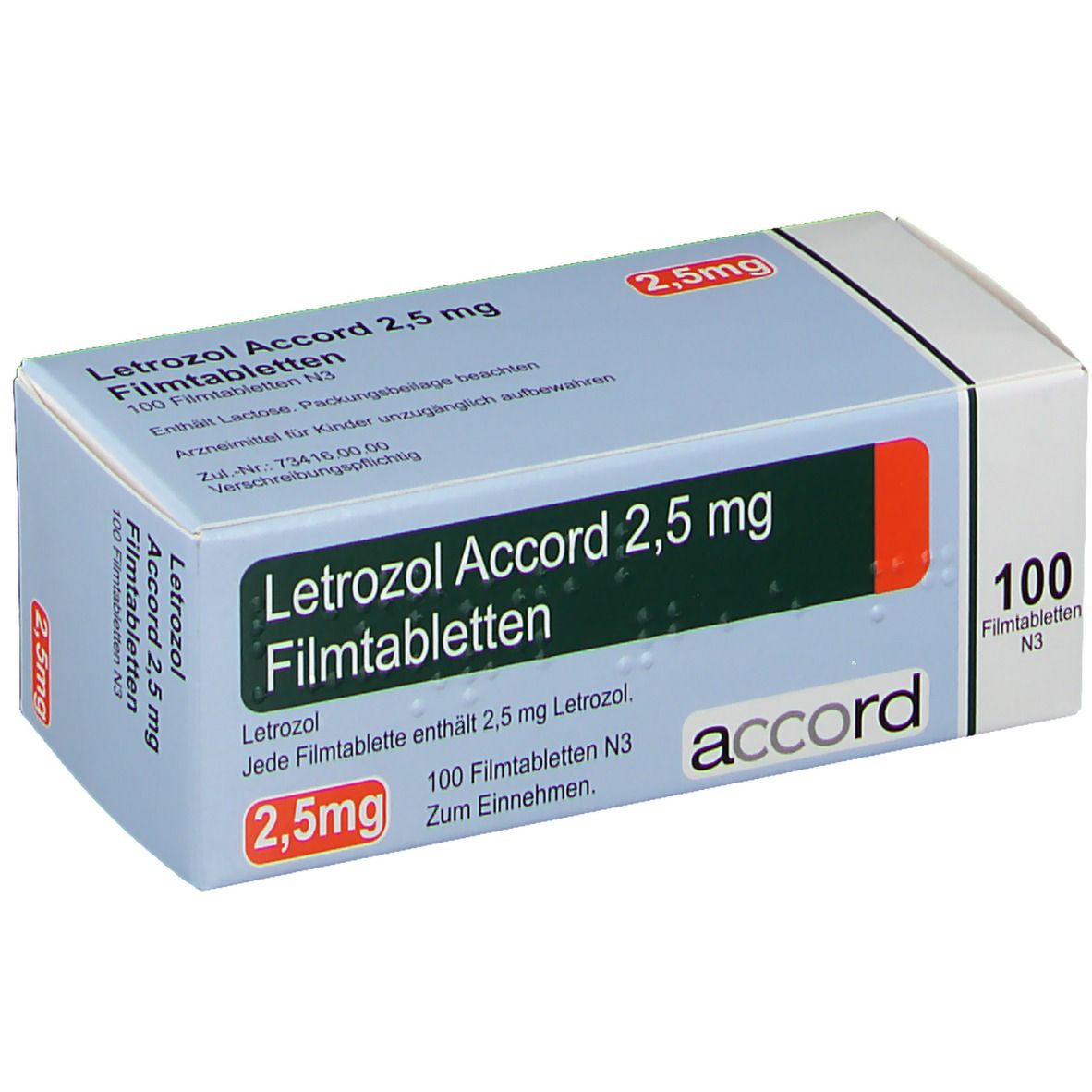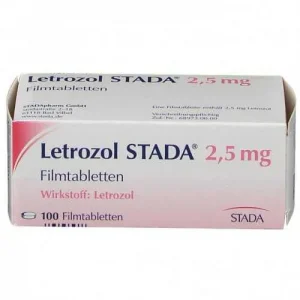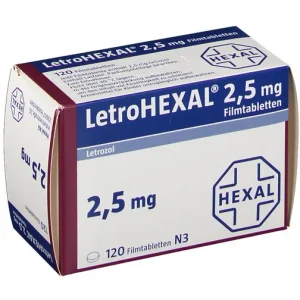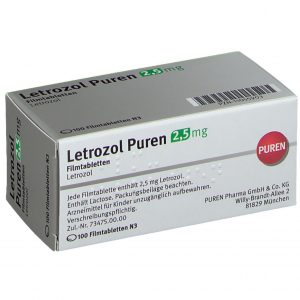Description
Pharmacokinetics
- Metabolism
Metabolic clearance of letrozole is mediated by the CYP3A4 and CYP2A6 isoenzymes of cytochrome P450 with the production of the pharmacologically inactive metabolite carbinol (CLm=2.1 l/hr). Metabolic clearance is relatively slower relative to the hepatic blood flow rate (approximately 90 l/hr). The formation of minor unidentified metabolites as well as direct renal and intestinal excretion play a minor role in the excretion of letrozole.
Two weeks after administration of radioactively labelled letrozole in healthy postmenopausal women, 88.2±7.6% of radioactivity was detected in the urine and 3.8±0.9% in the faeces. At least 75% of the radioactivity detected in urine up to 216 hours after ingestion could be attributed to the glucuronide metabolite carbinol, about 9% to two unidentified metabolites and about 6% to the unchanged substance.
- Excretion
The apparent elimination half-life from plasma is approximately 2-4 days. Equilibrium concentrations are reached within 2-6 weeks after a daily dose of 2.5 mg. Some non-linearity in pharmacokinetics has been reported with daily administration of letrozole 2.5 mg, as plasma concentrations at equilibrium are approximately 7 times higher than those measured after a single 2.5 mg dose (expected equilibrium concentrations are 1.5-2 times higher than after a single 2.5 mg dose). As the plasma concentration at equilibrium remains stable over a long period of time, it can be concluded that there is no prolonged accumulation of letrozole.






Reviews
There are no reviews yet.